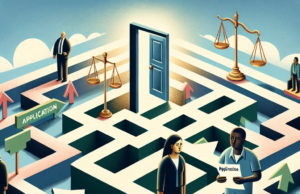Surge in Deportation Statistics: A Stark Reality Unveiled

In recent months, the United States has witnessed a significant surge in deportation statistics, revealing a stark reality that has far-reaching implications for individuals, families, and communities across the nation. This increase has sparked a renewed debate over immigration policies and the effectiveness of current enforcement measures. As the numbers climb, it is essential to understand the underlying factors contributing to this trend, the demographics most affected, and the broader societal impacts that accompany such a shift in immigration enforcement.
Understanding the Recent Surge in Deportation Statistics: An Overview
The latest data from the Department of Homeland Security (DHS) indicates a marked increase in deportations, with figures rising by over 30% compared to the previous year. This surge has been attributed to a combination of heightened enforcement measures, changes in immigration policy, and a backlog of cases that have accumulated over the years. The statistics reveal not only the volume of deportations but also the urgency with which immigration authorities are operating. As the Biden administration grapples with the complexities of immigration reform, the current deportation landscape presents a challenging paradox: the need for humane immigration practices versus the enforcement of existing laws.
Key Factors Contributing to the Increase in Deportation Rates
Several key factors have contributed to the recent uptick in deportation rates. First and foremost, the implementation of stricter immigration enforcement policies has led to an increase in arrests and subsequent deportations. Additionally, the COVID-19 pandemic has exacerbated existing backlogs in immigration courts, resulting in a backlog of cases that are now being processed more rapidly. Furthermore, the political climate surrounding immigration has shifted, with increased pressure on the administration to demonstrate a commitment to border security. This has led to a more aggressive approach to deportations, particularly for individuals with criminal records or those who have overstayed their visas.
Demographic Analysis: Who is Most Affected by Deportation Trends?
The demographic impact of rising deportation rates is profound, affecting various communities across the United States. Data indicates that Latino and Hispanic populations are disproportionately represented among those facing deportation, with individuals from Central American countries such as Guatemala, Honduras, and El Salvador being particularly vulnerable. Families with mixed immigration statuses are also significantly affected, as the deportation of one member can lead to the destabilization of entire households. Moreover, the rise in deportations has raised concerns about the mental health and well-being of affected individuals, particularly children who may be left without parental support.
The Legal Framework Surrounding Deportation: Policies and Procedures
The legal framework governing deportation in the United States is complex and multifaceted. Deportations are primarily enforced through the Immigration and Nationality Act (INA), which outlines the grounds for removal and the procedures for deportation proceedings. The process typically begins with an arrest by Immigration and Customs Enforcement (ICE) agents, followed by a hearing before an immigration judge. However, the current system has been criticized for its lack of due process, with many individuals facing expedited removal without adequate legal representation. Recent policy changes have also introduced new priorities for enforcement, focusing on individuals deemed to pose a threat to public safety or national security, further complicating the legal landscape.
Societal Impacts of Rising Deportation Rates on Communities
The societal implications of rising deportation rates are significant and multifaceted. Communities with high immigrant populations are experiencing increased fear and anxiety, as families grapple with the uncertainty of potential deportations. This climate of fear can lead to decreased participation in community activities, reluctance to seek medical care, and diminished trust in law enforcement. Furthermore, the economic impact of deportations is profound, as the loss of workers can strain local economies and disrupt essential services. Schools, businesses, and social services are all feeling the effects, as the fabric of these communities is increasingly frayed by the realities of deportation.
Future Implications: What the Surge in Deportations Means for Immigration Policy
The surge in deportations raises critical questions about the future of immigration policy in the United States. As the Biden administration continues to navigate the complexities of reform, the current statistics may prompt a reevaluation of enforcement priorities and the need for comprehensive immigration reform. Advocates for immigrant rights are calling for a more humane approach that prioritizes family unity and addresses the root causes of migration. Conversely, proponents of stricter enforcement argue that the increase in deportations is necessary to maintain order and security. The ongoing debate will likely shape the trajectory of U.S. immigration policy for years to come, as lawmakers grapple with the balance between enforcement and compassion.
The recent surge in deportation statistics serves as a stark reminder of the challenges facing the U.S. immigration system. As the nation confronts the realities of increased deportations, it is imperative to engage in meaningful dialogue about the implications for individuals, families, and communities. The path forward will require a careful consideration of the legal framework, societal impacts, and the urgent need for comprehensive immigration reform that reflects the values of justice and humanity. As the debate continues, the lives of countless individuals hang in the balance, underscoring the importance of a thoughtful and compassionate approach to immigration policy.



















